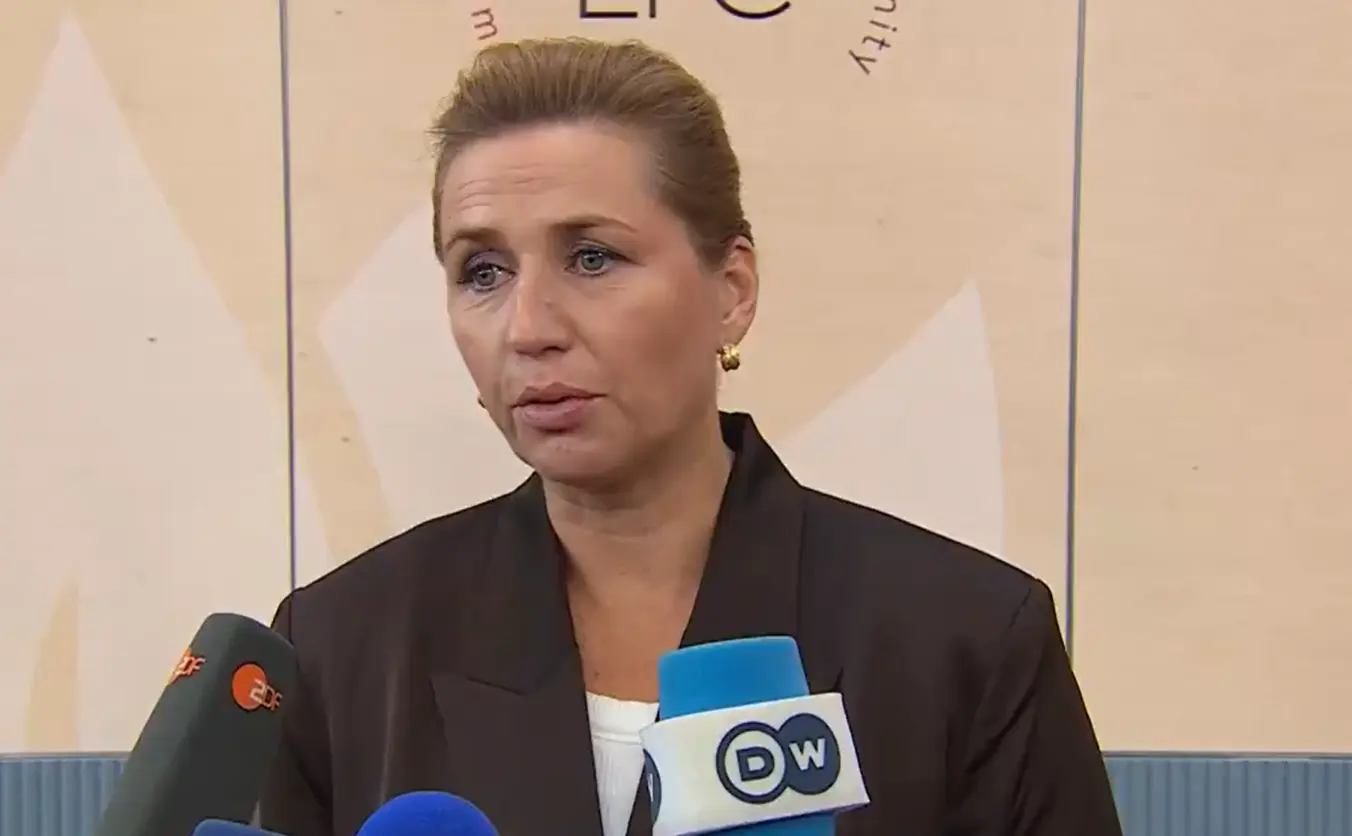
Denmark’s PM Mette Frederiksen - Russia’s hybrid war tactics target Denmark and the West with drones, cyberattacks, and disinformation.
How Russia’s Hybrid War Is Targeting Denmark and the West: A Deep Dive into Europe’s New Security Challenge
Drone Sightings and Airport Disruptions: The Alarming Pattern
In recent weeks, Denmark has faced a series of unexplained drone sightings over key infrastructure. Airports in Copenhagen, Aalborg, and Billund were temporarily shut down due to unidentified flying objects entering restricted airspace. These incidents disrupted hundreds of flights and stranded thousands of passengers.
Danish intelligence agencies now believe these drone activities are not isolated events. Instead, they are part of a larger pattern of hybrid warfare tactics allegedly orchestrated by Russia. The goal? To destabilize Western nations, create fear, and test the limits of European security systems.
“We are witnessing a new kind of warfare,” said Thomas Ahrenkiel, head of Denmark’s Foreign Intelligence Service. “It’s not about tanks and missiles. It’s about drones, cyberattacks, and psychological pressure.”
Understanding Hybrid Warfare: The Silent Threat
Hybrid warfare is a strategy that combines traditional military tactics with non-military tools. These include:
- Drone surveillance and sabotage
- Cyberattacks on government and civilian infrastructure
- Disinformation campaigns on social media
- Economic manipulation and energy blackmail
- Political interference and support for extremist groups
Unlike conventional war, hybrid warfare operates in the shadows. It’s designed to confuse, intimidate, and divide societies without triggering a full-scale military response. Russia has been accused of using these tactics in Ukraine, the Baltics, and now across Western Europe.
Denmark’s defense ministry has warned that hybrid threats are becoming more frequent and sophisticated. “We must adapt our security systems to face invisible enemies,” said Defense Minister Troels Lund Poulsen.
Europe’s Response: Building a United Front
In response to the growing threat, Denmark hosted a high-level EU summit in Copenhagen. Leaders from 40 countries, including France, Germany, Italy, and the UK, gathered to discuss coordinated defense strategies. The summit focused on drone defense, cybersecurity, and intelligence sharing.
French President Emmanuel Macron called for a “drone wall” across Europe’s borders. “Any drone entering our airspace without permission should be considered hostile and taken down,” he said. Macron also urged European navies to intercept Russian shadow fleet oil tankers that fund military operations.
Germany’s Chancellor Olaf Scholz emphasized the need for calm but firm action. “We must not panic, but we must prepare,” he said. Italy’s Prime Minister Giorgia Meloni echoed the sentiment, calling for investment in new technologies and rapid response teams.
Denmark’s Prime Minister Mette Frederiksen warned that Europe is facing its most dangerous moment since World War II. “We must rearm, innovate, and stand together,” she said. “This is not just Denmark’s problem. It’s a European challenge.”
Cyberattacks and Disinformation: The Digital Battlefield
Alongside drone threats, European nations are experiencing a surge in cyberattacks. Government websites, energy grids, hospitals, and election systems have been targeted. Many of these attacks are traced back to Russian-linked hacker groups such as Sandworm and Fancy Bear.
These cyberattacks aim to disrupt daily life, steal sensitive data, and undermine public trust. In Denmark, several municipalities reported ransomware attacks that locked down public services for days. In Germany, a major hospital network was forced offline due to malware infiltration.
Disinformation is another weapon in Russia’s hybrid arsenal. Fake news stories, doctored videos, and social media bots spread false narratives about Ukraine, NATO, and Western governments. These campaigns are designed to divide societies, fuel protests, and weaken democratic institutions.
“Russia is using every tool available—cyber, propaganda, energy—to challenge our unity,” said Macron. “We must be ready to defend not just our borders, but our minds.”
What’s Next: Europe’s Strategy for Resilience
The EU summit concluded with a five-point action plan to counter hybrid threats:
- Establish a European Drone Defense Network with shared radar and interception systems
- Launch a Cyber Shield Initiative to protect critical infrastructure
- Create a Disinformation Response Task Force to monitor and debunk fake news
- Increase funding for military innovation and AI-based threat detection
- Strengthen partnerships with NATO and support Ukraine’s defense capabilities
Denmark will lead the Drone Defense Network, while Germany will host the Cyber Shield headquarters. France will oversee the Disinformation Task Force, working closely with tech companies and media watchdogs.
Citizens are also being urged to stay alert. Governments are launching public awareness campaigns to educate people about online safety, misinformation, and emergency protocols. Schools and universities will include hybrid warfare awareness in their curriculum.
“We are entering a new era of conflict,” said Frederiksen. “It’s not about bombs and bullets anymore. It’s about invisible threats—drones, data, and deception. We must be smarter, faster, and united.”
Experts believe that hybrid warfare will continue to evolve. Artificial intelligence, deepfake technology, and autonomous drones could become part of future attacks. That’s why Europe is investing in research and development to stay ahead of these threats.
NATO has also pledged to support member states facing hybrid attacks. Joint exercises, intelligence sharing, and rapid deployment forces are being strengthened. The alliance is working closely with the EU to ensure that both military and civilian sectors are protected.
For Denmark, the recent events have been a wake-up call. Once considered a peaceful and low-risk country, it now finds itself on the front lines of a new kind of war. But with strong leadership, international support, and public awareness, Denmark is determined to defend its sovereignty and help shape Europe’s future security.
As hybrid threats grow more complex, one thing is clear: the West must adapt. The battle is no longer just on the ground—it’s in the skies, online, and in the minds of citizens. And in this new battlefield, unity is the strongest weapon.
Rapido Updates will continue to follow this evolving story and provide timely insights into the strategies shaping Europe’s defense future. Stay informed, stay alert, and stay connected.